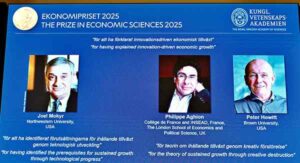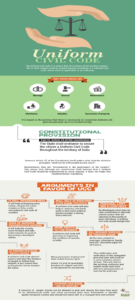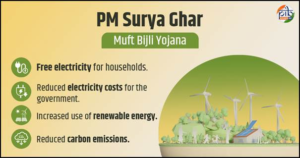Archives
(PRELIMS Focus)
Category: Economics
Context:
- The Nobel prize in Economics was declared for year 2025 by Royal Swedish Academy of Sciences.
About Nobel Prize in Economics 2025:

- Awardees: Joel Mokyr, Philippe Aghion and Peter Howitt won the 2025 Nobel economics prize. Mr. Mokyr was awarded half the prize with the other half being shared between Aghion and Howitt.
- Awarded for: They were awarded the Nobel economics prize for “having explained innovation-driven economic growth.”
- Significance: The laureates have taught us that sustained growth cannot be taken for granted. Economic stagnation, not growth, has been the norm for most of human history. Their work shows that we must be aware of, and counteract, threats to continued growth.
- About the winners:
- Mr. Mokyr is a professor at Northwestern University, in Evanston in the United States, while Mr. Aghion is professor at the College de France and INSEAD, in Paris, and at the London School of Economics and Political Science, in Britain.
- Mr. Howitt is a professor at Brown University, in Providence in the United States.
About Nobel Economics Prize:
- Feature: The prestigious award, formally known as the Sveriges Riksbank Prize in Economic Sciences in Memory of Alfred Nobel, is the final prize, given out every year and is worth 11 million Swedish Kronor ($1.2 million).
- First Nobel Economics Prize: The economics prize was established much later (compared to other Nobel prizes), being given out first in 1969 when it was won by Norway’s Ragnar Frisch and Jan Tinbergen from the Netherlands for work in dynamic economic modelling.
- Famous Recipients: While few economists are household names, relatively well-known winners include former U.S. Federal Reserve chairman Ben Bernanke, and Paul Krugman and Milton Friedman.
- Last year’s economics award: It went to U.S.-based academics Simon Johnson, James Robinson and Daron Acemoglu for research that explored the relationship between colonisation and the establishment of public institutions to explain why some countries have been mired in poverty for decades.
Source:
Category: Polity and Governance
Context:
- The Uttarakhand government approved a crucial amendment in the Uniform Civil Code (UCC) bringing relief to citizens of Nepali and Bhutanese origin who are living in the State and do not have an Aadhaar card as identity proof to register their marriage.
About Uniform Civil Code (UCC):

- Definition: The Uniform Civil Code refers to a single set of laws governing personal matters such as marriage, divorce, adoption, inheritance, and succession for all citizens of India.
- Constitutional provisions:
- Part of DPSP: The concept of UCC is mentioned in Article 44 of the Indian Constitution as a Directive Principle of State Policy, which states that the state shall endeavour to secure a uniform civil code for citizens throughout the territory of India.
- Entry 5 of the Concurrent List in the Seventh Schedule: It specifically addresses various aspects including marriage, divorce, adoption, and succession, among others, allowing for legislation concerning personal laws.
- Important judgements:
- 1985 – Shah Bano Case: The Court upheld a Muslim woman’s right to maintenance, linking UCC to national integration.
- 1995 – Sarla Mudgal Case: Strongly favoured UCC, especially for the majority Hindu population, questioning the delay in its implementation.
- 2017 – Shayara Bano Case: Addressed triple talaq, reigniting the UCC debate but separating it from the issue of human rights.
- Arguments in favour:
- A UCC would ensure equal rights and treatment for all citizens, regardless of their religious background. This aligns with Article 14 of the Indian Constitution, which guarantees equality before the law.
- Many personal laws have been criticized for being discriminatory towards women. A UCC could address issues like triple talaq, unequal inheritance rights, and child marriage.
- India’s current system of multiple personal laws based on religion creates a complex legal landscape. A UCC would simplify this system, making it easier for courts to administer justice and for citizens to understand their rights.
- Arguments against:
- India’s pluralistic society is characterized by a rich blend of cultural and religious practices, many of which are protected under personal laws. Critics argue that a UCC could erode this diversity, leading to cultural homogenization.
- Opponents of UCC argue that it could infringe on the right to religious freedom guaranteed by Article 25 of the Constitution. They contend that personal laws are an integral part of religious practice for many communities.
- There are concerns that a UCC could disproportionately affect minority communities, potentially leading to a sense of marginalization.
Source:
Category: Government Schemes
Context:
- Despite a near four-fold increase in applications between March 2024 and July 2025, only 13.1% of the targeted 1 crore solar rooftop installations, under the PM Surya Ghar: Muft Bijli Yojana, has been achieved.
About PM Surya Ghar: Muft Bijli Yojana:

- Feature: It is a central scheme to promote the adoption of solar rooftop systems by providing substantial financial subsidies and ensuring ease of installation.
- Objective: It aims to provide free electricity to one crore households in India, who opt to install roof top solar electricity units. The households will be able to get 300 units of electricity free every month.
- Implementation Agencies: The scheme will be executed at two levels.
- National Level: Managed by the National Programme Implementation Agency (NPIA).
- State Level: Managed by State Implementation Agencies (SIAs), which are the Distribution Utilities (DISCOMs) or Power/Energy Departments of the respective states or UTs.
- Supervision: As SIAs, DISCOMs are responsible for facilitating various measures to promote rooftop solar adoption, including ensuring the availability of net metres, and conducting timely inspections and commissioning of installations.
- Capping of subsidy: The scheme provides subsidies to reduce the cost of installing solar rooftop systems. The subsidy is capped at a maximum of 3kW capacity.
- Eligibility: Grid-connected rooftop solar systems on residential properties, including roofs, terraces, balconies, and elevated structures are eligible for Central Financial Assistance (CFA).
Source:
Category: Environment and Ecology
Context:
- Snow leopard that inhabits the rugged ranges of 12 Asian countries, including India, has the lowest genetic diversity of any big cat species in the world, even lower than that of the dwindling cheetah.
About Snow Leopards:

- Physical features
- Extra paws: Its extra large paws act like a pair of natural snow shoes preventing the cat from sinking into the snow.
- Short ears: Its round, short ears reduce heat loss, and the wide, short nasal cavity warms the air before it reaches the cat’s lungs.
- Longer hind limbs: The cat has strong, short front limbs and longer hind limbs helping launch the cat up to 30 feet (10 meters) in one leap.
- Difference with other cats:
- Unlike other big cats, snow leopards can’t roar.
- Despite being called the snow ‘leopard’, this big cat is more closely related to the tiger than the leopard.
- Habitat: Snow leopards (Panthera uncia) are considered medium-sized cats that are known for their elusive nature and ability to thrive in harsh, high-altitude environments.
- Native areas: They are native to the mountains of Central and South Asia and typically found at elevations between 9,800 and 17,000 feet in mountain ranges, including the Himalayas.
- Adaptations: They are known as “ghosts of the mountains” due to their elusive nature and ability to blend into their surroundings.
- Reproduction: They usually mate between January and March, a time when both sexes mark their territories intensively leaving signs such as scrapes, faeces, urine and scent-spray in prominent locations along their travel routes.
- Ecological Importance: They serve as top predators and Indicator species, as their presence reflects the health of their high-altitude ecosystems. Their kills provide food for scavengers like vultures and wolves, supporting other species.
- Conservation status:
- IUCN: Vulnerable
- CITES: Appendix 1
- Wildlife (Protection) Act, 1972 :- Schedule 1
Source:
Category: Economics
Context:
- Retail inflation, as measured by the Consumer Price Index fell to a more than eight-year-low of 1.54% in September on falling food and fuel prices. This is once again below the RBI’s lower comfort bound of 2%.
About Consumer Price Index (CPI):
- Nature: CPI measures the overall change in consumer prices based on a representative basket of goods and services over time, with 2012 as the base year.
- Objective: CPI is used for targeting price stability, adjusting dearness allowance, and understanding cost of living, purchasing power, and the expensiveness of goods and services.
- Composition: The basket of goods includes food, clothing, transportation, medical care, electricity, education, and more. The following are the primary components of CPI (along with their weightage).
- Food and Beverage (45.86%)
- Housing (10.07%)
- Fuel and Light (6.84%)
- Clothing and Footwear (6.53%)
- Pan, tobacco, and intoxicants (2.38%)
- Miscellaneous (28.32%)
- Released by: The CPI is published monthly by the National Statistical Office (NSO) under the Ministry of Statistics and Program Implementation (MoSPI).
- 4 types of CPI:
- CPI for Industrial Workers (CPI-IW): It tracks price changes in a fixed basket of goods and services used by industrial workers over time. The Labour Bureau, under the Ministry of Labour and Employment, compiles CPI-IW.
- CPI for Agricultural Laborers (CPI-AL): The Labour Bureau compiles CPI-AL to assist in revising minimum wages for agricultural workers across different states.
- CPI for Rural Labourer (CPI-RL): It measures changes in the retail prices of goods and services consumed by agricultural and rural laborers. The Labour Bureau compiles CPI-RL.
- CPI for Urban Non-Manual Employees (CPI-UNME): CPI-UNME is compiled by NSO. An urban non-manual employee earns 50% or more of their income from non-manual work in the urban non-agricultural sector.
Source:
(MAINS Focus)
(GS Paper II – Welfare Schemes for Vulnerable Sections of the Population and Issues Relating to Their Protection and Development)
Context (Introduction)
Despite seven decades of constitutional protection, caste-based atrocities remain a grim reality. NCRB data (2023) shows a rise in crimes against Scheduled Castes and Tribes, reflecting that legal safeguards have yet to transform deep-rooted social hierarchies.
Main Arguments
- Constitutional–Legal Gap: Though the Constitution guarantees equality (Articles 14–17) and justice (Article 46), the SC/ST (Prevention of Atrocities) Act, 1989 is poorly enforced. Over 60% of cases remain pending, undermining the credibility of the justice system and eroding victims’ trust.
- Sociological Continuity of Caste Hierarchy: Caste continues as a socially inherited inequality, sustained through notions of purity and pollution. Economic progress and urbanisation have not erased social barriers; discrimination extends from temple entry and access to water sources to job and housing bias.
- Political and Ideological Apathy: Contemporary politics often uses symbolic inclusion — participation in rituals or token representation — while avoiding structural reform. The Hindutva homogenisation discourse frames caste assertion as divisive, marginalising Ambedkarite and Phuleite reformist ideas.
- Institutional Bias and Developmental Exclusion: The under-representation of Dalits and Adivasis in the judiciary, academia, and bureaucracy perpetuates elite control. The absence of caste-sensitivity training in the police and judiciary leads to biased investigations and delayed justice.
- Erosion of Civil Society Engagement: Social reform movements like the Dalit Panthers or Bahujan Samaj Party’s early mobilisation once challenged entrenched hierarchies. Today, fragmented activism and societal indifference have diluted the collective outrage once necessary to confront caste violence.
Challenges and Structural Barriers
- Weak Enforcement Machinery: Police bias, hostile witnesses, and prolonged trials create impunity. Lack of independent investigative units leads to procedural lapses and underreporting.
- Political Reluctance for Reform: Parties avoid strong anti-caste campaigns fearing backlash from dominant castes. This has prevented national consensus on fraternity or inter-caste reconciliation.
- Cultural Appropriation without Transformation: Reformers like Ambedkar, Phule, and Periyar are celebrated symbolically, while their radical call for redistribution, rationalism, and fraternity remains unimplemented.
- Fragmentation of Marginalised Voices: Dalit, Adivasi, and OBC movements lack organisational synergy, weakening the Bahujan solidarity essential for political assertion.
- Societal Indifference: Caste atrocities are seen as localised disputes rather than moral failures of the nation. This normalisation of inequality blocks empathy and sustained civic action.
Reforms and Way Forward
- Strengthen Legal and Institutional Frameworks:
- Establish special fast-track courts for Atrocities Act cases.
- Introduce independent prosecution wings and witness protection programmes.
- Conduct caste-sensitivity training for police and judges.
- National Campaign for Fraternity and Equality:
- Launch a mass awareness drive akin to Swachh Bharat, promoting constitutional morality and inter-caste harmony.
- Integrate Ambedkar’s ideals into school curricula and media outreach.
- Economic and Social Empowerment:
- Enforce reservation audits and transparent implementation of the SC/ST Sub-Plan.
- Promote Dalit entrepreneurship and cooperative farming to dismantle dependency on dominant castes.
- Representation and Voice:
- Ensure greater inclusion of Dalit–Adivasi individuals in public institutions, media, and universities.
- Encourage Dalit-Bahujan literature, cinema, and art as instruments of social critique and identity assertion.
- Revitalising Civil Society:
- Support grassroots anti-caste movements and NGOs to build solidarity.
- Create community-led social observatories to document and publicise caste atrocities.
Conclusion
Caste atrocities represent not isolated acts of violence but a continuing failure of constitutional morality and social conscience. As Dr. Ambedkar warned, political democracy cannot endure without social democracy. Building a caste-free India demands not just punitive laws but moral leadership, institutional accountability, and civic awakening rooted in fraternity and equality.
Mains Question
- Caste-based atrocities reflect a failure of constitutional morality rather than a mere breakdown of law and order. Analyse the causes and suggest reforms for achieving true social democracy in India. (15 marks, 250 words)
Source: The Hindu
(GS Paper III – Indian Economy: Effects of Liberalization on the Economy, Changes in Industrial Policy, and Growth of Technology)
Context (Introduction)
The 2025 Nobel Prize in Economics, awarded to Joel Mokyr, Philippe Aghion, and Peter Howitt, highlights that innovation alone does not guarantee progress — it must be guided, sustained, and socially managed to translate into long-term economic well-being.
Main Arguments
- Innovation and Growth Are Not Automatic: The laureates’ collective work shows that while technological breakthroughs drive productivity, their link with economic growth and living standards is not linear. Societies must create enabling conditions — education, competition, and openness — to harness innovation.
- Joel Mokyr – The Historical Preconditions of Innovation: Mokyr’s research reveals that sustained technological progress began with the Industrial Revolution, when societies began linking scientific knowledge to economic activity. Innovation becomes transformative only when it rests on scientific reasoning and institutional support for curiosity and learning.
- Aghion & Howitt – The Dynamics of Creative Destruction: Their “Schumpeterian growth model” explains innovation as a cycle of creative destruction, where new technologies replace old ones. This destruction fuels progress but also creates turbulence — job losses, inequality, and industrial displacement — that need policy cushioning.
- Managing Technological Turbulence: The economists stress that open and competitive markets encourage new ideas while protectionism stifles innovation. Governments must act as shepherds, balancing support for emerging sectors with safety nets for disrupted ones — as seen in AI and automation today.
- Progress Needs Institutional Nurturing: Innovation flourishes in societies that value openness, competition, and adaptability. Progress is not inevitable; it requires continuous investment in R&D, regulatory foresight, and human capital to ensure technology serves welfare, not inequality.
Challenges and Structural Barriers
- Unequal Access to Innovation: Technological change often benefits capital owners and skilled workers, widening inequalities. Without inclusive education and skilling, innovation can exacerbate divides.
- Policy Myopia: Governments tend to focus on short-term economic gains, neglecting the ecosystem for long-term innovation — such as intellectual property frameworks, research funding, and ethical AI regulation.
- Protectionist and Rent-Seeking Tendencies: Economic nationalism or monopolistic control can stifle the competition-driven dynamism needed for creative destruction to yield productivity growth.
- Social Disruptions of Technological Change: The shift from traditional to digital economies generates job displacement and anxiety among workers, requiring reskilling frameworks and adaptive social security systems.
- Cultural Resistance to Change: Innovation thrives in cultures open to new ideas and experimentation. Closed or hierarchical societies often fear disruption and thus inhibit technological and social transformation.
Reforms and Policy Directions
- Innovation Ecosystem and R&D Support:
- Increase public expenditure on R&D (currently ~0.7% of GDP) towards OECD levels of 2–3%.
- Establish innovation clusters and incubators under the Atal Innovation Mission model for grassroots technologies.
- Education and Skill Alignment:
- Reform education to nurture critical thinking, scientific temper, and lifelong learning.
- Create AI and automation readiness programmes for workforce adaptation.
- Balancing Creative Destruction:
- Introduce transition funds and retraining support for displaced workers.
- Ensure that the benefits of innovation reach MSMEs and informal sectors through inclusive digitalisation.
- Institutional Openness and Competition:
- Reduce entry barriers, encourage start-ups and open markets, and limit rent-seeking monopolies.
- Use data protection and competition laws to prevent dominance by a few tech giants.
- Ethical and Equitable Innovation Governance:
- Promote responsible AI, green technologies, and public participation in technology assessment.
- Embed innovation ethics in policy design to align progress with human welfare.
Conclusion
Innovation is not a self-propelling force but a socially constructed process requiring leadership, openness, and foresight. As Mokyr, Aghion, and Howitt demonstrate, the challenge for the 21st century lies in managing creative destruction — ensuring that innovation uplifts all sections of society rather than deepening divides. For India, the path forward lies in institutionalising curiosity, competition, and compassion within its development framework.
Mains Question
- “Technological progress alone does not guarantee economic growth; it requires institutions that can manage creative destruction.” Discuss in Indian context with reference to growth after 1990 reforms. (15 marks, 250 words)
Source: The Indian Express
